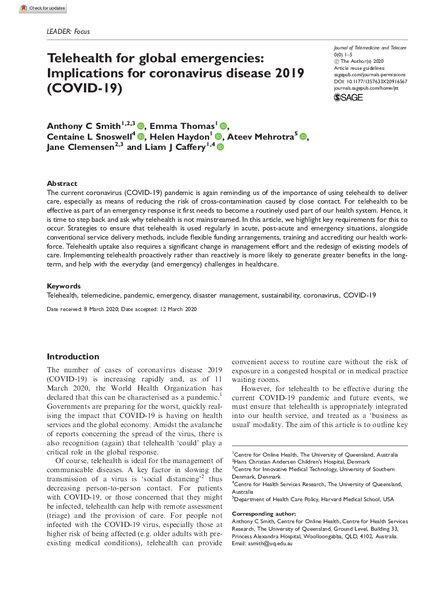
The current coronavirus (COVID-19) pandemic is again reminding us of the importance of using telehealth to deliver care, especially as means of reducing the risk of cross-contamination caused by close contact. For telehealth to be effective as part of an emergency response it first needs to become a routinely used part of our health system. Hence, it is time to step back and ask why telehealth is not mainstreamed. In this article, we highlight key requirements for this to occur. Strategies to ensure that telehealth is used regularly in acute, post-acute and emergency situations, alongside conventional service delivery methods, include flexible funding arrangements, training and accrediting our health workforce. Telehealth uptake also requires a significant change in management effort and the redesign of existing models of care. Implementing telehealth proactively rather than reactively is more likely to generate greater benefits in the long-term, and help with the everyday (and emergency) challenges in healthcare.